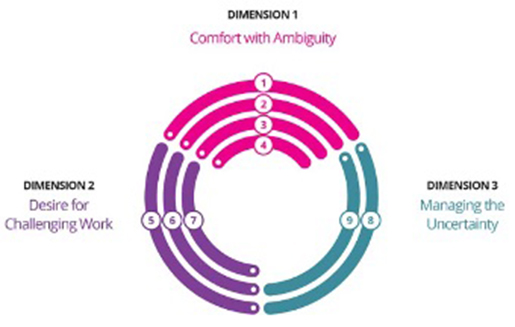There’s nothing quite like working on a massive project for over a year, assuming you’re going live on 1 July and discovering immediately before the go button is about to be pushed, that it’s all up in the air.
Knowing that once the window closes, there won’t be a go-live until the following 1 July. Trying to provide the best advice you can while knowing you may have to manage the fallout for your team and a broad network of stakeholders if the decision is made to hold off.
And knowing those people had invested an enormous amount of energy and thought into wide-ranging system reform and were eager to operate in a new way.
That’s where I found myself over a decade ago, leading the Queensland Health Reform Transition Office.

Luckily the team I worked with had a reasonable tolerance of ambiguity, and as a result, they were resilient, good at changing and helping others understand the opportunity that can emerge from ambiguity.
By the time we went live a year later we had developed the catchphrase ‘Here’s something we prepared earlier we can build on’.
Bob Iger, the former CEO of The Walt Disney Company, knew what he was talking about when he said, “The most successful people are those who can navigate ambiguity.”
Research has shown that Tolerance of Ambiguity (TOA) is a significant predictor of positive work behaviours and organisational success.
In Episode Three of the Thriving in Complexity podcast, I spoke with Kerryn Fewster, a management coach and director of the consultancy Change2020. Kerryn has been researching our tolerance of ambiguity since 2017 in collaboration with the Queensland University of Technology (QUT).
They found employees who embrace ambiguity exhibit:
- improved job performance
- decision-making abilities
- creativity
- critical thinking
- risk acceptance
- effective leadership
- job satisfaction and
- organisational commitment.
In addition, TOA can reduce the stress that ambiguity contributes to employees’ health, helping to prevent workplace absenteeism, impaired health, and reduced job performance.
Interestingly, Kerryn and QUT found existing measures of TOA failed to measure individual attitudes towards ambiguity at work accurately, and there was a need to develop a scale that comprehensively examined the importance of TOA in predicting a range of work-related behaviours and outcomes.
The good news is, that the Indicator of Ambiguity (IAm) assessment tool has resulted from their research and the techniques and skills associated with tolerance of ambiguity are like a toolbox that can expand as you learn new and diverse ways of working.
Kerryn and QUT’s research focuses on three key dimensions: comfort with ambiguity, desire for challenging work, and managing uncertainty.

Indicator of Ambiguity (I Am)®
I completed the assessment and discovered that my own comfort with ambiguity and desire for challenging work meant I could contribute to the stress of those around me whenever I failed to adequately focus on managing their uncertainty.
Knowing I’m not the only leader with that blind spot is why I decided to become an accredited IAm partner.
If you’d like to know more, reach out and let’s chat about how IAm and engaging gamified training could benefit you and your team.







